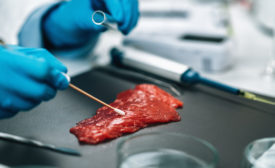Expert Commentary
Fight for Food Safety
FSIS now mandates that USDA-regulated food products declare sesame as an allergen on packaging.
Read More
Fight for Food Safety
2023 recalls: Year in Review
The past year saw 62 recalls of USDA-regulated meat and poultry products.
Read More
COMMENTARY
Meat processors should be food safety influencers
Consumers commonly make four food handling mistakes when it comes to safety.
Read More
Independent Thoughts
New initiatives to help small processors could affect food safety
USDA efforts to address market consolidation and food security could hold food safety implications.
Read More
Food safety interventions must target origins as well as vectors
Sound interventions must target origins as well as vectors of contamination.
Read More
Stay ahead of the curve. Unlock a dose of cutting-edge insights.
Receive our premium content directly to your inbox.
SIGN-UP TODAYCopyright ©2025. All Rights Reserved BNP Media.
Design, CMS, Hosting & Web Development :: ePublishing











